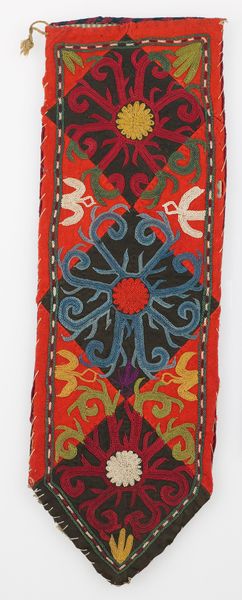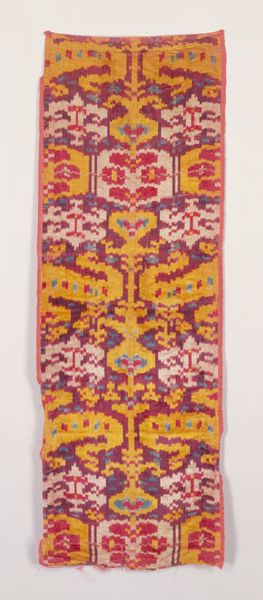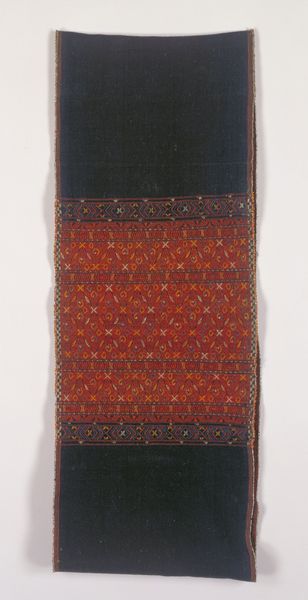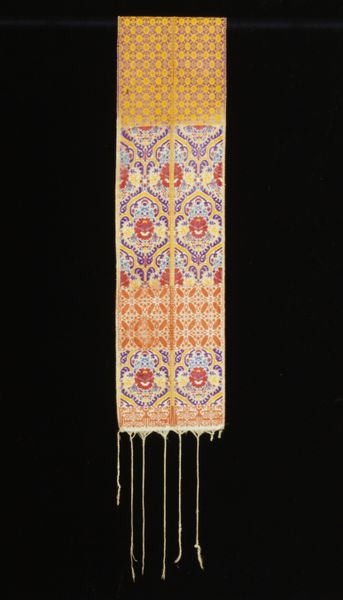
silk, textile, cotton
#
pattern heavy
#
natural stone pattern
#
silk
#
textile
#
geometric pattern
#
pattern background
#
repetitive shape and pattern
#
repetition of pattern
#
regular pattern
#
pattern repetition
#
cotton
#
islamic-art
#
layered pattern
#
combined pattern
Dimensions: 32 1/2 x 4 in. (82.55 x 10.16 cm)
Copyright: Public Domain
Curator: Here we have a textile piece, a kamarband dating from the late 19th century. Kamarbands are decorative belts or sashes. This one, whose creator remains anonymous, is currently housed here at the Minneapolis Institute of Art. Editor: My first impression is a feeling of rich cultural storytelling woven into the very fabric of this textile. It really draws you in with its meticulous geometry. Curator: Absolutely. Consider its role in reflecting the social and cultural identity of its time. It was most likely an adornment for someone of stature, as its woven patterns are quite elaborate. Editor: The repeated motif, almost like a stylized floral form, or perhaps even a paisley variant, immediately grabs my attention. What symbolic readings might we give to such recurring elements, especially given the Islamic art context? Curator: Indeed. The motifs likely held layers of symbolic meanings—prosperity, fertility, status. And the visual language has significance—a constant rhythm through repetition, speaking to societal ideals of harmony and order in the 19th century. Editor: I agree completely. The colors, too, aren't just decorative choices. Deep reds might indicate passion, the softer yellows perhaps intellect or wisdom. Colors can have specific meanings related to cultural stories and social hierarchies. Curator: It is hard to truly know exactly the intention of the artisan of course, but examining such textiles provides insight into artistic skill and technological capabilities during that period, and into how those shaped broader cultural practices and aesthetic tastes. Editor: Considering it would have adorned the body, how the kamarband moved, how it caught the light – even that small bit of performance carries emotional meaning in its own time. It really makes it such a vivid, resonant artifact. Curator: By understanding art as both an expression of personal style and as a marker of larger historical trends, it brings historical art to life in new ways. Editor: For me it bridges a gap through pattern and textile and connects across time with what might be considered timeless imagery.
Comments
No comments
Be the first to comment and join the conversation on the ultimate creative platform.













